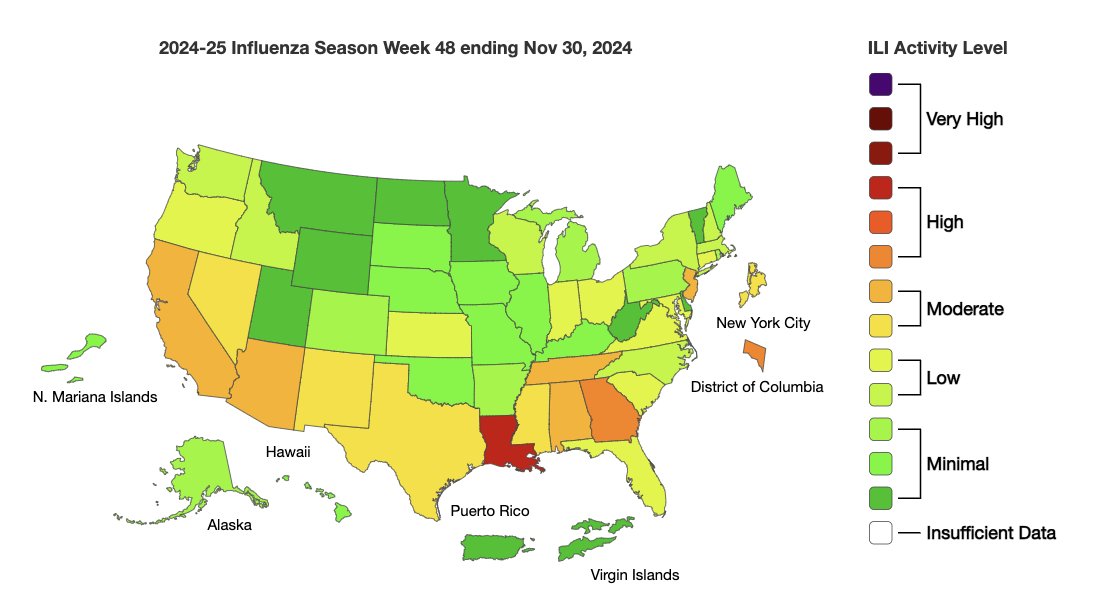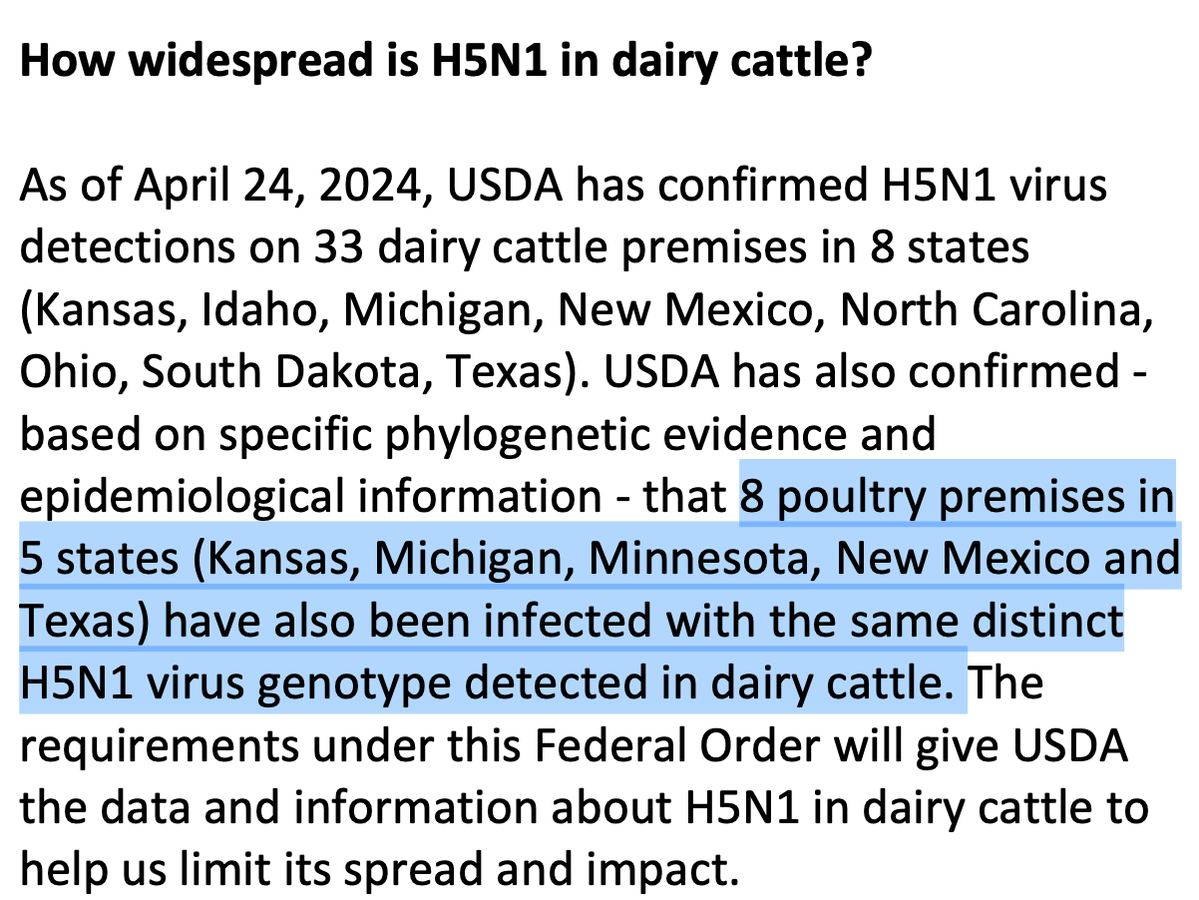1. Today's special #ACIP meeting, to deal with safety concerns related to the J&J #Covid vaccine, is beginning now. There will also be an update on the rollout of vaccines in 5-11 year olds.
I will try to live tweet.
I will try to live tweet.
2. New chair Grace Lee calls roll call and vote calls in a random order that changes each time she does it. It's confusing and makes it really hard to keep tabs of who is there, who voted. Just saying.
3. Doran Fink from @US_FDA says FDA updated its guidance on use of the J&J vaccine to reflect better understanding of the risk associated the J&J or any other adenovirus vectored vaccines (ie AstraZeneca). The risk relates to a serious clotting event TTS.
4. TTS stands for thrombosis with thrombocytopenia. @US_FDA's Fink said TTS cases have been seen in men & women across all ages, but most commonly in women aged 30-49, at a rate of 1 cases per 100,000 doses administered. 1 in 7 of these cases have been fatal.
5. @US_FDA's Fink says it has been concluded that the risk of TTS is a "class effect" — meaning it is seen across adenovirus-vectored vaccines.
This is going to be a problem for existing adenovirus-vectored vaccines and work on experimental vaccines using this platform.
This is going to be a problem for existing adenovirus-vectored vaccines and work on experimental vaccines using this platform.
7. Most of the US cases occurred before the FDA-CDC paused use of the J&J vaccine in the spring after TTS came to light. No explanation yet about why the decline but I suspect its because at-risk people (women) opted not to take J&J. 

9. Correcting previous tweet: CDC's See said there have been 9 deaths in the US. (The difference relates to the reporting period.) 

10. Highest rates of deaths to TTS were among women in their 30s and 40s, where the rate was about 2 deaths / million vaccine doses given. 

11. In fact there may have been 11 deaths. In two other cases that looked very like the others, there wasn't imaging done that would have definitely confirmed it.
@CDCgov's See says the TTS cases and deaths may have been underreported.
@CDCgov's See says the TTS cases and deaths may have been underreported.

12. @CDCgov's See's presentation only focused on deaths. It would be interesting to hear how people who survived TTS are. Bleeds in the brain can be life-altering events. #ACIP
13. #ACIP member Lynn Bahta asked about the health of survivors of TTS. @CDCgov's See says they don't yet have much data. They know a bit about some of the 9 survivors who had to go into long-term care facilities. Serious issues.
14. #ACIP member Kathy Poehling asked if there've been any TTS cases seen in people who took the J&J vaccine as a booster. @CDCgov's See said not to date, but the number of people who elected to get the J&J vaccine as their booster isn't large.
15. Poehling noted when use of the J&J was resumed after the pause in the spring, doctors were warned not to use heparin (a blood thinner) in patients with TTS because it exacerbates the damage. Looks like doctors heeded the warning — but that didn't prevent additional deaths.
16. @CDCgov's Sara Oliver is running through the risks/benefits of continued use of the J&J #Covid vaccine. She notes that the risk no longer seems to cluster mainly in women in their 30s and 40s. 

17. Oliver is running through what other countries have done regarding adenovirus vaccines in the fact of the TTS risk.
She noted in particular that Canada has given a preferential recommendation to use mRNA vaccines until there's a reason not to use them.
#ACIP
She noted in particular that Canada has given a preferential recommendation to use mRNA vaccines until there's a reason not to use them.
#ACIP

19. The risk/benefit calculations still show use of the J&J vaccine reduces more hospitalizations and deaths from Covid than TTS cases caused. #ACIP 

20. But when the mRNA vaccines' benefits and risks are also factored into the calculations, the mRNA vaccines prevent more hospitalizations and deaths than the J&J vaccine does, Oliver reported. #ACIP 
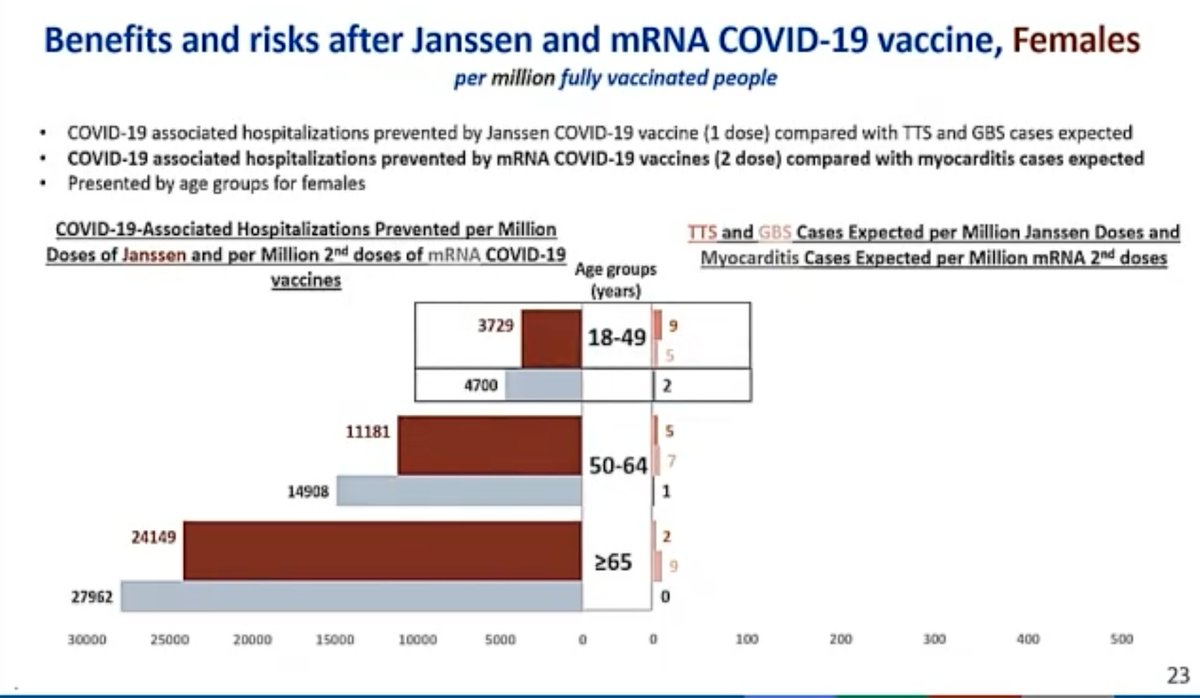
21. Oliver noted that the side effects associated with the mRNA vaccines compared to the J&J are of a different level of severity. mRNA vaccines prevent more Covid cases, cause less severe side effects in the people who develop them. #ACIP 

22. This is fascinating. Maybe inevitable. Abut also kinda ... appalling.
Demographics of who is getting offered the J&J vaccine, which is 1) not as effective as the mRNAs and 2) associated with higher risks. #ACIP
Demographics of who is getting offered the J&J vaccine, which is 1) not as effective as the mRNAs and 2) associated with higher risks. #ACIP

26. Here are the pros and cons of policy option #3. Important to note here that whatever the US does will be noted internationally & will affect willingness of other countries to use the J&J vaccine. #ACIP 
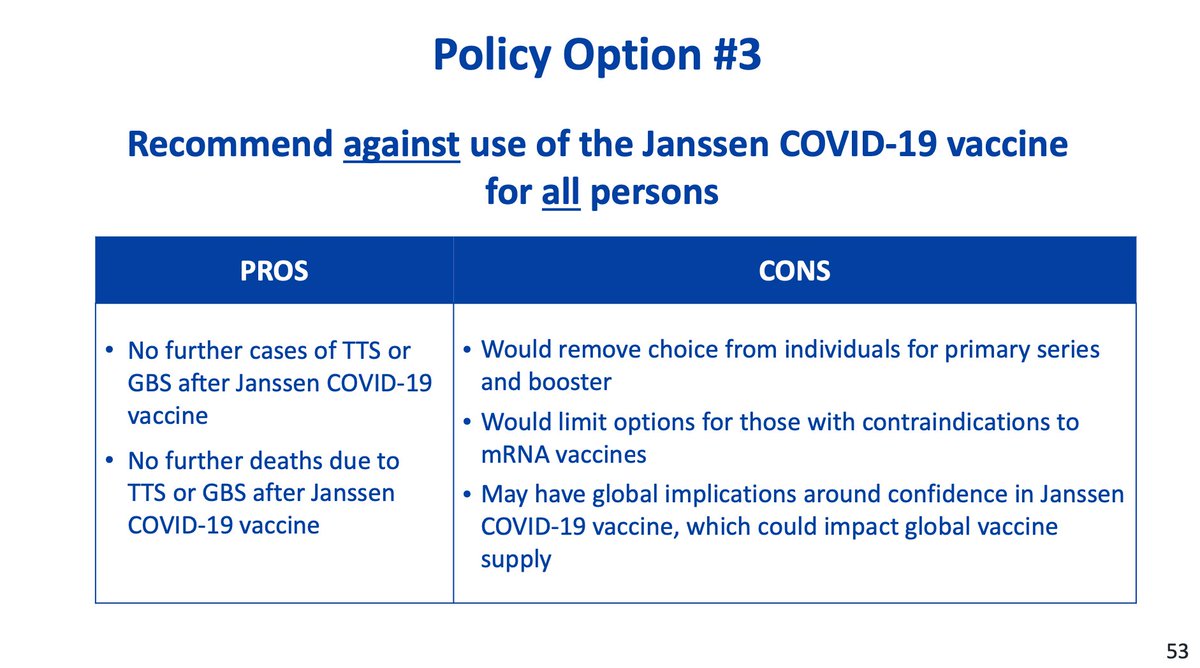
27. Here are the pros and cons of policy option #4.
This is the option #ACIP's Covid vaccine work group is recommending the committee adopt.
This is the option #ACIP's Covid vaccine work group is recommending the committee adopt.

28. Penny Heaton, global head of vaccines for J&J, is now presenting. She has a tough job ahead of her. Says the company is confident the vaccine is saving lives and in some countries, it is the only available vaccine.
Real edge in her voice. #ACIP
Real edge in her voice. #ACIP
30. "We are confident in the durability of protection," Heaton told #ACIP. She says the antibody titers peak later than mRNA vaccines, but persist longer.
"This durability, this may be crucial in the setting we're in in the US."
"This durability, this may be crucial in the setting we're in in the US."
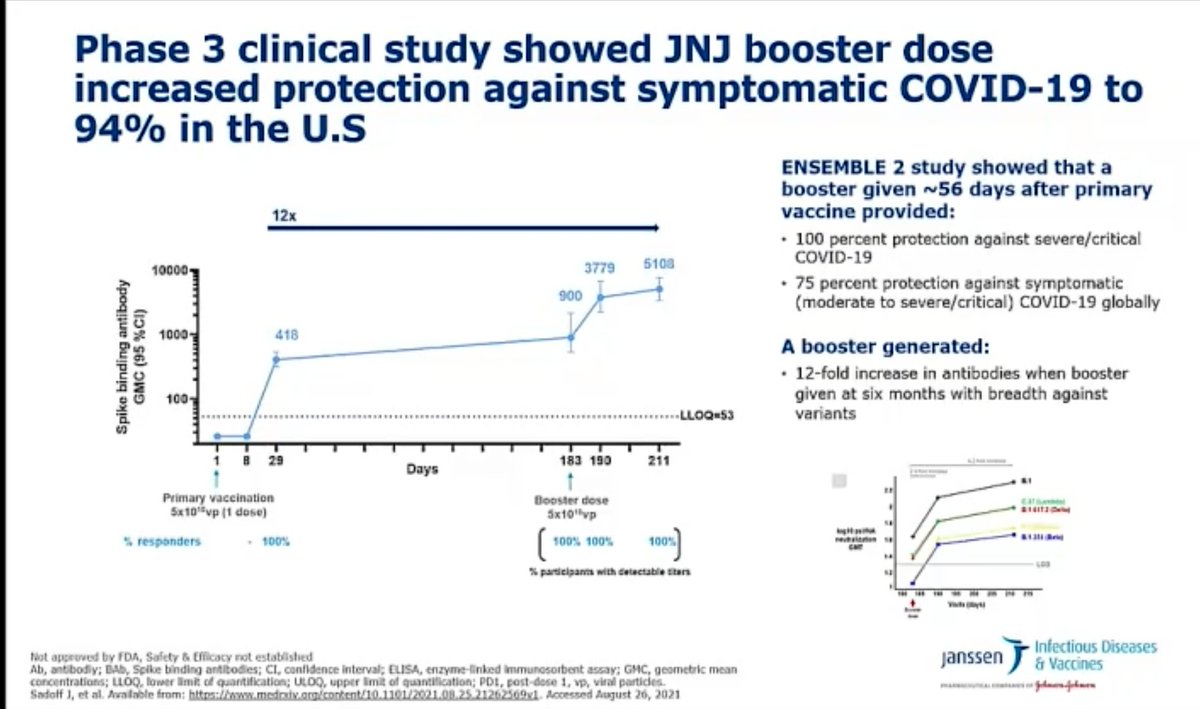
31. Heaton: says J&J is one of the main suppliers of vaccine to African Union countries. Says the world is depending on this vaccine.
I've got to say, she sounds upset. #ACIP
I've got to say, she sounds upset. #ACIP
32. #ACIP member Sarah Long asks if the public will understand what ACIP is trying to do if it recommends "preferential" use of the mRNA vaccines.
Pablo Sanchez says he has a real problem with continued use of this vaccine. Says he urges patients not to get it.
Pablo Sanchez says he has a real problem with continued use of this vaccine. Says he urges patients not to get it.
33. The vote on what to do re: the J&J vaccine is supposed to happen at 2:30 pm but that's not going to happen. Supposed to be a 20-minute public comment period first and it hasn't started yet. #ACIP
34. #ACIP member Jamie Loehr argues removing the J&J vaccine will do more damage than it averts.
Beth Bell says she believes the best option here is a preferential recommendation.
Beth Bell says she believes the best option here is a preferential recommendation.
35. #ACIP member Beth Bell said she would not recommend the J&J vaccine to her family members, but says some people will opt for it, even when informed of the risks.
36. #ACIP member Keipp Talbot says the wording of the recommendation has to be very clear and strong because the J&J vaccine is being used mainly in populations with lower health literacy who may not understand the nuances here.
This slide makes her point very clear.
This slide makes her point very clear.

38. Matthew Zahn, a non-voting member of #ACIP representing the National Association of County and City Health Officials, stressed the importance of having an alternative to the mRNA vaccines. He says some people will not agree to be vaccinated with the mRNA vaccines.
40. #ACIP votes to give a preferential recommendation to mRNA vaccines — ie to steer people away from the J&J vaccine — by a unanimous vote.
41. @CDCgov's vaccine advisers vote unanimously to preferentially recommend mRNA vaccines over the J&J vaccine, because of concerns about TTS. statnews.com/2021/12/16/cdc…
42. The #ACIP meeting continues with an update on what the vaccine safety surveillance data shows about use of Covid vaccines in kids 5-11, and an Omicron update. I'm not going to be listening coz I have to write. Sorry.
• • •
Missing some Tweet in this thread? You can try to
force a refresh



















